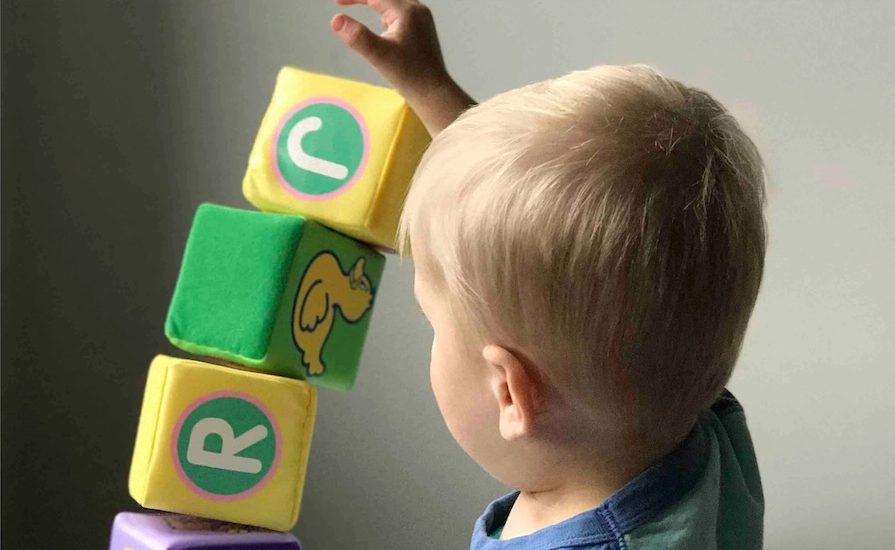Origins of the Social Story Philosophy
(1986-1989)
I hope we can develop a curriculum where we can teach from far, far away.” Gray (1986)
“Share the frustration of practice, the excitement of mastery. Hug other fiddlers when you see them. Once the song becomes very, very clear… Open the window and play LOUD, okay? Hold a concert.” Gray (1988c)
The previous section, “The Historical Context of Social Stories”, begins with the early 1950s to describe the broad historical era and events surrounding Social Stories. Their most immediate roots begin in the late 1980s, as seven million Americans were joining “Hands Across America”, Margaret Thatcher was elected for the third time as Prime Minister of England, and the Iran-Iraq war drew to a close.
Jenison Public Schools received a Challenge Grant (Grant) from the Michigan Developmental Disabilities Council (contract #86300). Looking back, our very early efforts to teach children with autism in general education classes likely contributed to the acceptance of our Challenge Grant application. The goal of our grant project was to place secondary severely to moderately impaired students with autism in general education classes and vocational experiences in the community, to create a ‘real life’ classroom. Most grant recipients were community organizations with projects implementing early initiatives in supported employment. ‘Jenison’ was the only school district to receive the Challenge Grant.
I was responsible for the Grant as part of my position as a consultant to students with autism. As a school district among community organizations, our grant experiences were somewhat unique. There were periodic meetings with other Grant recipients where we updated one another on our activities. For one meeting, I compiled a packet of grant materials (Packet, 1986-1987) to share news articles, training site guidelines, samples of program forms and objectives, and excerpts from staff journals.
By 1989, our efforts to educate our students in general education and local businesses were gaining detail. In compliance with the required periodic grant reporting, “Teaching Severely to Moderately Disabled Students to Learn, Work, and Live in the Community” (Gray, 1989c), described our progress toward project goals. The document includes ethical standards, a support hierarchy for coaches and instructional assistants, and samples of the adapted curriculum.
One of the biggest challenges was that the number of business and general education classrooms outnumbered our available support staff. We began training employees in the vocational training sites and general education students to ‘look out for’ and effectively assist our students when needed.
We also started writing stories and social packets to support our students. They were silent coaches that could teach needed skills in advance, or be there when we were not. As an example, Attachment B (Gray, 1989c, cited previously) contains materials for a student with autism included in the Clothing and Textiles class at Jenison High School. It is a step-by-step story that describes how to follow and complete directions in a sewing pattern. We were creating a curriculum that would enable us to teach from a distance, one story and social packet at a time.
We had a quarterly newsletter throughout the Grant, The Morning News. It kept others informed of our activities, describing our mistakes and ideas while always seeking feedback and new subscribers. The entire November 1988 issue of The Morning News (Gray, 1988b) is an example of how the newsletter shared our triumphs and setbacks. Excited by our pilot classrooms in the community, the issue opens with an article titled, “In Appreciation: A Look at People in Business”. It is followed by, “A Discussion of Ethics”, an article and attached letter that describe a mistake that I made while coaching Joe, one of our students. The very short article, “Supported Employment: You Can’t Play a Fiddle on Both Sides”, reflects our determination to succeed. The issue closes with a list of our current challenges and updates on the businesses working with us.
The Morning News also described our efforts to place students with autism in general education classrooms with articles like “No Phone Booth Required” (Gray, 1988a) and “Learning Together… How To” (Gray,1989b).
Our world was growing… without an Internet. In the fall of 1989 The Morning News became a national publication with twenty new subscribers. We were excited to connect with people in seven other states:
To Elaine in Albuquerque, Jane in Iowa, The Georgia Department of Education, Deborah in Maryland, and everywhere else in-between…please feel free to… send us your comments, ideas, reactions, etc. Welcome to Jenison Public Schools! We may be seeing you come spring break, as many of us head south! To those of you coming north to Jenison this spring break… why? (Gray, 1989a).
In the early 1990s, experiences with my students helped me to see myself through their eyes. It would ultimately change everything. For example, “Self-Advocacy and the Severely Impaired” (Gray, 1990), describes a situation with one of my students. It led me to “…move away from assumptions and attitudes” (Gray, 1990, p.3) that interfere with student independence. I began realizing that – with all good intentions – I may be contributing to many of the challenges that my students face: “Imagine the frustration of the severely impaired when we are wrong. Where those who can speak say, ‘No, that’s not what I meant,” the severely impaired must at times be confused by our misdirected responses” (p.3). The article, “India, Laundry, and our Mailing List” (Gray, 1990) acknowledged the value of respect for other perspectives.
Over time, experiences like these resulted in an important program philosophy. First: Abandon all assumptions. Second: Recognize that the social impairment in autism is shared, with mistakes made on all sides of the social equation. Third: When Typical people interact with people with autism, both perspectives are equally valid and deserving of respect. To this day, these three principles define the Social Story philosophy and guide the development of each Story.
A new decade, the 1990s, was beginning. The Morning News had a small but loyal audience. We also had a sound program philosophy. Little did we know that we were about to find ourselves at the center of an intriguing newfound popularity.
References
- Gray, C. A. (1986). Excerpts from diaries: How it feels to be challenged. Unpublished document. Jenison, MI: Jenison Public Schools.
- Gray, C. A. (1988a). No phone booth required. The Morning News. February 16. Jenison, MI: Jenison Public Schools.
- Gray, C. A. (1988b). The Morning News. November. Jenison, MI: Jenison Public Schools.
- Gray, C. A. (1988c). You can’t play a fiddle on both sides. The Morning News. November. Jenison, MI: Jenison Public Schools.
- Gray, C. A. (1989a). Hello, America! The Morning News. November-December. Jenison, MI: Jenison Public Schools.
- Gray, C. A. (1989b). Learning together… How to. The Morning News. April-May. Jenison, MI: Jenison Public Schools.
- Gray, C. A. (1989c). Teaching severely to moderately disabled students to learn, work, and live in the community: A model to integrate functional skills into the curriculum. Unpublished document.
- Gray, C. A. (1990a). India, laundry, and our mailing list. The Morning News. March. Jenison, MI: Jenison Public Schools.
- Gray, C. A. (1990b). Self-advocacy and the severely impaired. The Morning News. January-February. Jenison, MI: Jenison Public Schools.
- Packet of Grant materials. Contributing authors: Christophersen, C., DeMaagd, P., Fisher, A. (1986-87).
Let’s Connect
Have questions or a webinar request? Complete the form and let’s connect!




